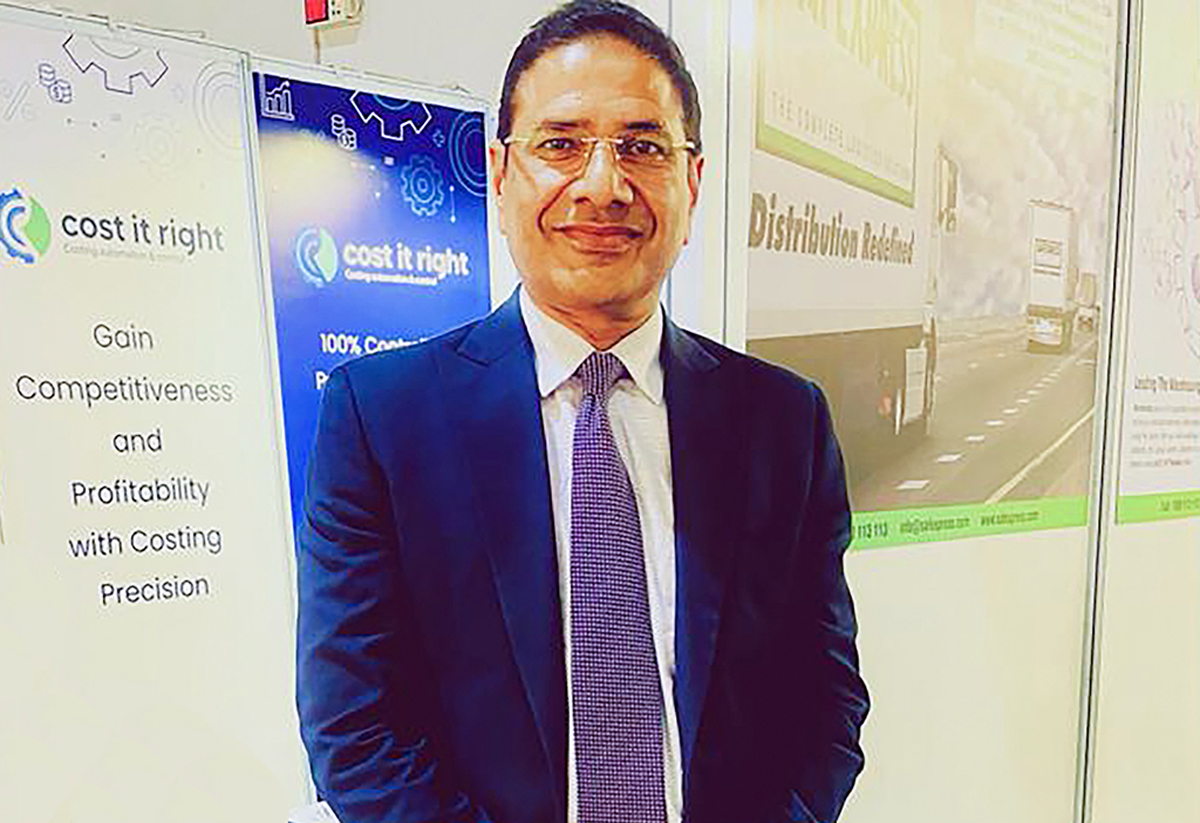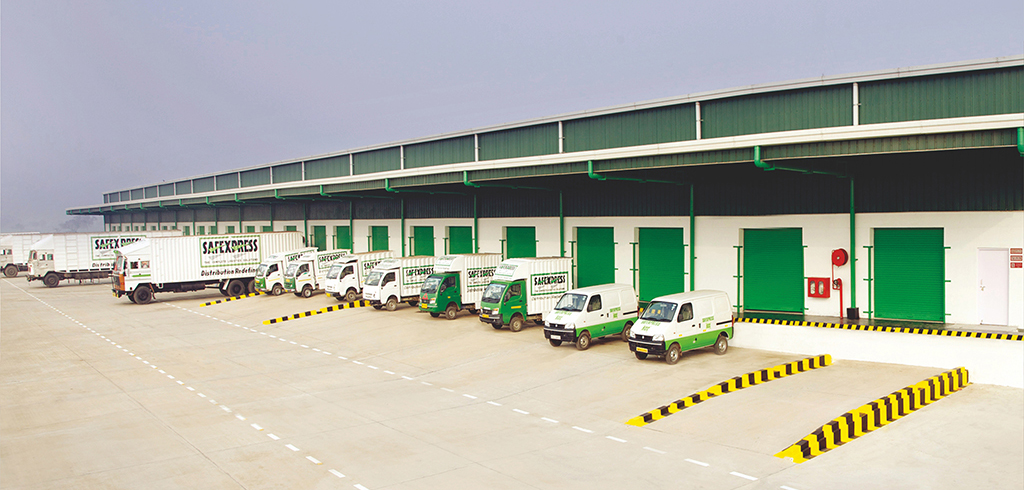
Safexpress offers much required stability and uniformity in a highly diffused logistics market in India. Among various logistics services, the company offers warehousing, express distribution, door-to-door logistics and VMI services. Its massive infrastructure is integrated from end-to-end contiguously with the spread of trade designed on a hub-and-spoke model
Safexpress Pvt. Ltd. is a well-entrenched name in the logistics and express distribution business. Since its inception in 1997, it has grown into a pan-India distribution monolith with its 88 state-of-the-art transhipment hubs, connecting 730 big and small warehouses designed so as to cater to all the 31,188 pin codes through 2,218 express distribution routes. More than 9,000 fully-containerised vehicles with the Safexpress logo run this mammoth operation across the country, reaching each and every corner. This consistent growth over the years can be attributed to its B2B express distribution network and the India story that has been unfolding since 1990s.
The entire structure is built on a hub-and-spoke model duly supported by a well-advanced IT system and a highly skilled and motivated human resource. Its unwavering focus on the India market has helped it invest in infrastructure which is consistent with end-to-end logistics and complements express distribution requirements. Automotive and automotive ancillary, pharmaceutical and healthcare, engineering and electricals, electronics and hi-tech, books and publishing industry to readymade garments and fashion – Safexpress serves all business segments and its business strategy to cater to each segment’s requirements is contiguous to industry norms and practices.
The Logistics Boom
The logistics industry in India got a big fillip in 1990s with India liberalising its economy. The structural adjustment programmes announced in 1991 unleashed the ‘animal spirit’ and encouraged consumption and competition in economic relations with the field of logistics being no exception to it. Many private companies entered the field of logistics and express distribution during those heady days of ambition and optimism. This optimism was retained by liberal tax regimes and relaxation in FDI policies which encouraged assortment of foreign logistics service providers to invest and compete in the India market.
“The ensuing competition and rising discretionary spends of a burgeoning middle class coincided with a boom in online retail which converted every anonymous consumer into some sort of a celebrity. The philosophy of ‘a customer is retained only when it is satisfied’ brought about a lot of technology-driven solutions and innovations. From mobile-based track and trace to most recent optimisations like handheld barcode scanners and RFIDs have decidedly reduced cost, and spillage and service became the buzzwords by the beginning of the last decade,” says Vijay Vashisht, Associate Vice President, Safexpress P Limited.
The recent developments are as noteworthy. In November 2017, the then Union Finance Minister Arun Jaitley granted ‘infrastructure’ status to the logistics and transport industry following the recommendation of the 14th Institutional Mechanism meeting. The IM meetings identified the high cost of logistics in India – according to the Ministry of Commerce and Industry, India spends 14% of its GDP on logistics compared to Japan (11%) and the US (9-10%) – as an impediment to growth while referring to “highly informal, localised and diffused nature of Indian logistics” as a reason for the high logistics cost. This announcement was meant to enable the logistics sector to avail infrastructure lending at easier terms with enhanced limits, access to large amount of funds as external commercial borrowings (ECBs), access to longer tenure funds from insurance companies and pension funds and be eligible to borrow from India Infrastructure Financing Company Limited (IIFCL).
The announcement to recognise logistics and transportation as infrastructure came against the immediate backdrop of implementation of Goods and Services Tax (GST), a uniform nation-wide indirect tax system that held promise for an efficient, integrated and buoyed economy. While presenting the Union Budget 2020-21, the incumbent finance minister announced the adoption of a National Logistics Policy, which is in the making. These initiatives are, however, faced with challenges coming from realities on the ground. The Indian logistics industry is so highly informal and fragmented that pan-Indian operators can be counted on fingertips.
In a USD 215 billion Indian logistics market, the share of organised pan-India operators is no more than 10-15%. This paints a grim picture. “In such a scenario, Safexpress offers the much required stability and uniformity in a highly diffused logistics market in India. The logistics services that Safexpress offers include warehousing, express distribution, door-to-door logistics and VMI services. Apart from this, Safexpress also offers consultancy which is essentially a type of specialised analysis by using data and information to identify and solve any logistics and supply chain operation strategy for its clients,” says Vashisht.
The Broader Picture
Deloitte in association with ASSOCHAM published a paper titled ‘India on the Cusp of a Logistics Revolution: January 2018 following a conference organised by the latter. This paper dwelt at length on the issue while centred on three themes:
• End-to-end logistics integration
• Role and impact of digitisation
• The contours and the efficacy of a National Logistics Policy.
The paper focused on how integrated end-to-end logistics network with required infrastructure facilities and a digital and service platform can lead to improved efficiency. The paper also highlights how globalisation and digital revolution are being used by the logistic sector to streamline processes and ensure a smoother interface. The paper finally suggests the possible contours of a National Logistics Policy that the government may consider and implement. Going by the Delloite-ASSOCHAM paper, a very limited number of logistics companies in India are up for the game.

“This is where Safexpress scores. In the 26th year of operation, investing in capability expansion has been the mainstay of its business strategy. By capability expansion it means optimising resources – warehouses, hubs, trucks, manpower and technology – that can withstand the pulls and pressure arising out 20 years from now. The second aspect of its growth strategy is its steadfast and sole commitment to the national market. Safexpress is an ‘India only’ company and as has been the case, especially for over the last three decades, the India story will continue to be shepherded by domestic consumption. Safexpress’ commitment would continue to be in providing logistics and express distribution solution the way industry the needs it,” Vashisht states.